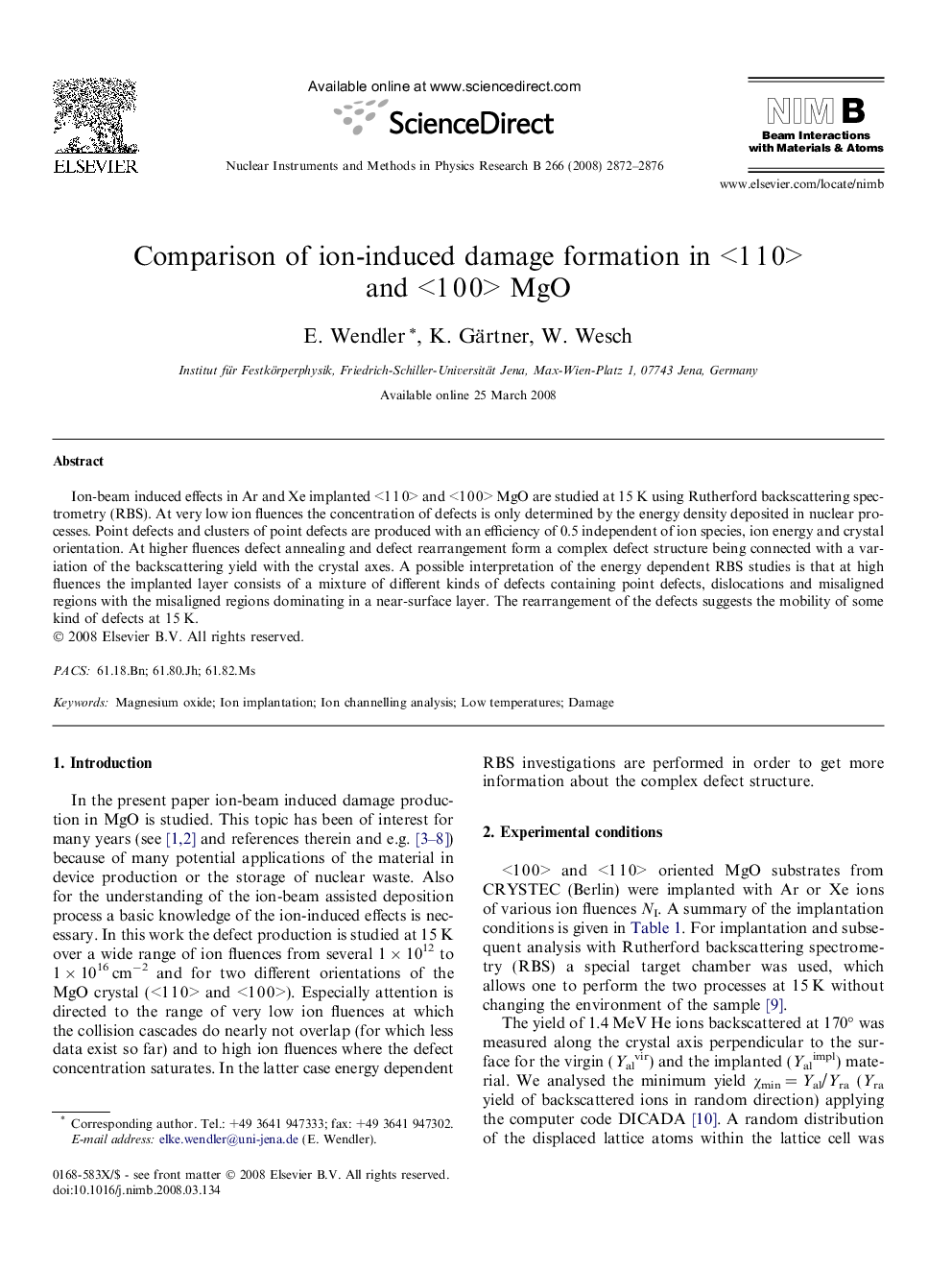| Article ID | Journal | Published Year | Pages | File Type |
|---|---|---|---|---|
| 1686032 | Nuclear Instruments and Methods in Physics Research Section B: Beam Interactions with Materials and Atoms | 2008 | 5 Pages |
Abstract
Ion-beam induced effects in Ar and Xe implanted <1Â 1Â 0> and <1Â 0Â 0> MgO are studied at 15Â K using Rutherford backscattering spectrometry (RBS). At very low ion fluences the concentration of defects is only determined by the energy density deposited in nuclear processes. Point defects and clusters of point defects are produced with an efficiency of 0.5 independent of ion species, ion energy and crystal orientation. At higher fluences defect annealing and defect rearrangement form a complex defect structure being connected with a variation of the backscattering yield with the crystal axes. A possible interpretation of the energy dependent RBS studies is that at high fluences the implanted layer consists of a mixture of different kinds of defects containing point defects, dislocations and misaligned regions with the misaligned regions dominating in a near-surface layer. The rearrangement of the defects suggests the mobility of some kind of defects at 15Â K.
Related Topics
Physical Sciences and Engineering
Materials Science
Surfaces, Coatings and Films
Authors
E. Wendler, K. Gärtner, W. Wesch,
